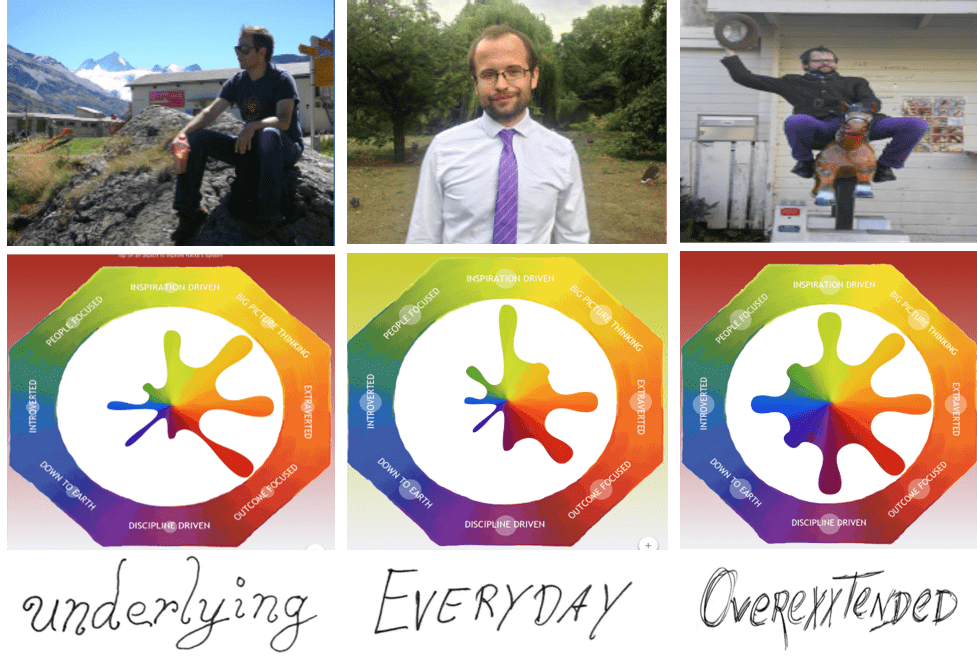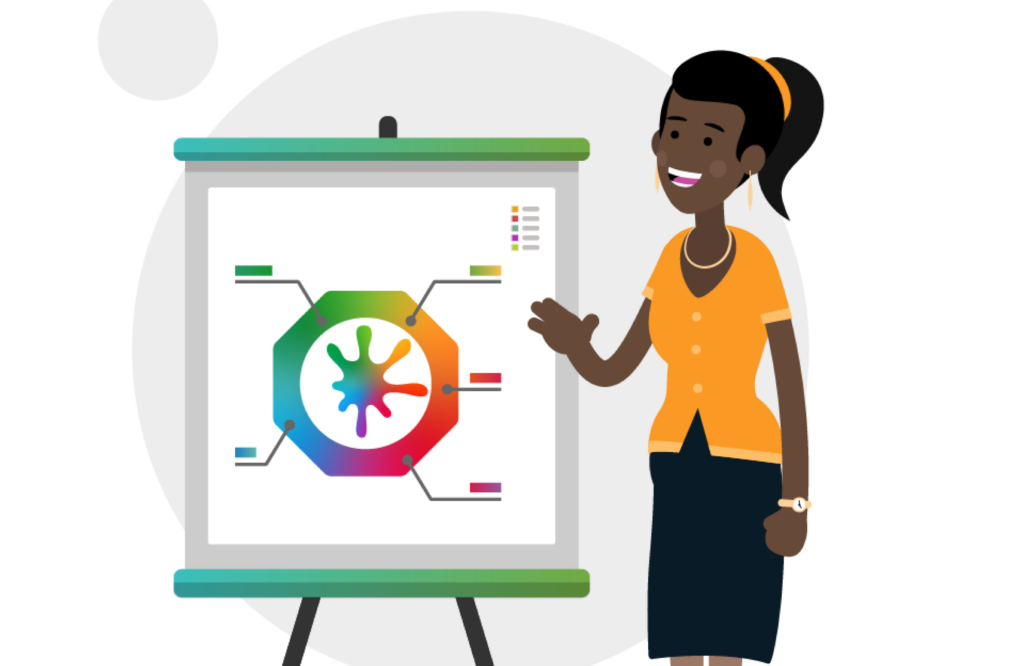Opinion Piece By Lumina Learning Practitioner Nikita Mikhailov
Do we change? Can we change? Why do we change?
These are just some of the questions people raise when talking about personality. If Costa and Macrae are to be believed that from age 30 your personality is ‘set like plaster”, this creates an interesting paradigm which we will explore in this article.
Firstly, let’s back up a little bit and define what we mean by personality. The American Psychological Association (also affectionately known as APA) defines personality as “the unique psychological qualities of an individual that influence a variety of characteristic behaviour patterns (both overt and covert) across different situations over time”. Or as I like to phrase it “what you tend to like, tend to do, might overdo”. Basically, personality is a set of tendencies or traits of behaviour defining how we tend to react in certain situations.
Until recently, Psychologists have either ignored individual variation in personality across situations or have treated it as measurement error (Judge. 2014. p.199). Being told any change within you is a measurement error doesn’t tend to make you feel all warm and fuzzy. And how does this square with so many clients asking how they can improve and develop their personality?
However, we can be happy that times are changing. There is a renaissance going on in personality research where people have moved past seeing personality change within individuals as measurement errors, and now are exploring it as something that might be meaningful in itself.
What pearls of wisdom are these studies bringing up?
- Personality can change. Therapy has been shown to reduce Neuroticism and increase Extroversion. It’s reassuring to know that therapy reduces negative emotional effect and increases a positive emotion effect (Roberts et al., 2018)
- Retirement increases Openness and Agreeableness which is excellent, but do we really need to wait to retire to be nicer to one another? (Schwada, Bleidorn, 2017)
- Personality changes might be due to factors such as genetics. (Tucker-Drop, 2017)
So, it might be that the dynamics of your personality is in your genes, like many other things about your Big Five.
For us, the dynamics of one’s personality is not a ‘measurement error’, a fluke or a glitch in the matrix, they are a fundamental part of your personality. Some people are more dynamic than others in how their personality changes, but we all have this capability to an extent. Therefore, if you have some unhelpful patterns of personality which are causing you and those around you, problems and issues – the good news is that you can work on it.
Although personality can also be stable to a certain extent, let’s not jump the gun. It is not a question of whether personality is stable or dynamic, it is more that personality is stable and dynamic. The interaction between the two is what is so interesting to explore.
This gives you a brief overview of my research literature review, and for those of you who are interested, there is so much more to read, believe me! Just go to Google Scholar and take your pick. But how does this relate to Lumina Learning’s tools and how do we apply it?
How personality dynamics set us apart
From my perspective, Stewart Desson is the Da Vinci of Psychometrics. When he created Lumina Spark in 2009, the status quo was, personality is “set in plaster”.
Stewart created a tool that moved past this paradigm and built on the concept that personality is dynamic and represented within the Three Personas, and it is only now that the general academic research is catching up with this.
First and foremost, Lumina Spark, Lumina Emotion and Lumina Leader 360 are built on the dynamics of personality, setting the Lumina toolkit apart from other personality assessments which were built on the old paradigm of unchangeability of personality.
Secondly, the development of the Lumina Splash App and Lumina Team have allowed us to animate the changes of the Three Personas, so we do actually have a visual animation of the dynamics of personality in play, which is pretty cool.
Practice
When it comes to practice, first and foremost Lumina addresses that question that many clients ask at the beginning of a session, “Is this my home self or my work self?”

Nikita’s Underlying, Everyday and Overextended Personas…
With the Three Personas, we can build on this question and explore it further with the individual rather than saying we are all so stable and that what the individual is experiencing is an error (I know, I know; I have chip on my shoulder about the dynamics of personality being seen as an error before).
If the client does not ask the question, we can open this up for discussion by asking a question such as “Are there any aspects of your personality that you consciously manage at work and why do you think it is necessary to do so?”
My favourite page in the Lumina Spark Portrait is the 24 Qualities in detail as it allows you to explore such a large number of patterns of personality. It always amazes me how rich this information can be and at the same time how clients can use it to play to their strengths, work on their blind spots and be more effective in collaborating with others.
It is also interesting to explore:
- Why are you managing your personality?
- How does this management of your personality serve you short or long term?
- How sustainable is it?
Summary
So now we can see that the dynamics of personality are a part of personality theory rather than being on the fringe.
We are getting more and more academic research on personality dynamics. The fact that Lumina Learning products have the Big Five model at their very core, allows us to learn from the research enriching our practice. At Lumina we have tools in place that research is just catching up with. I don’t know about you, but this makes me very grateful indeed to be a Lumina Learning Practitioner.
You can find more information on how personalities differ by subscribing here.
Some reading on the subject:
Boyce, C. J., Wood, A. M., & Powdthavee, N. (2013). Is personality fixed? Personality changes as much as “variable” economic factors and more strongly predicts changes to life satisfaction. Social Indicators Research, 111(1), 287-305.
Costa Jr, P. T.,&McCrae, R. R. (1994). Set like plaster? Evidence for the stability of adult personality
Judge, T. A., Simon, L. S., Hurst, C.,&Kelley, K. (2014). What I experienced yesterday is who I am today: Relationship of work motivations and behaviours to within-individual variation in the five-factor model of personality. Journal of Applied Psychology, 99(2), 199.
Judge, T. A.,&Zapata, C. P. (2015). The person-situation debate revisited: Effect of situation strength and trait activation on the validity of the Big Five personality traits in predicting job performance. Academy of Management Journal, 58(4), 1149-1179.
Meyer, R. D., Dalal, R. S.,&Hermida, R. (2010). A review and synthesis of situational strength in the organizational sciences. Journal of Management, 36(1), 121-140.
Roberts, B. W., Luo, J., Briley, D. A., Chow, P. I., Su, R.,&Hill, P. L. (2017). A systematic review of personality trait change through intervention
Tett, R. P.,&Guterman, H. A. (2000). Situation trait relevance, trait expression, and cross-situational consistency: Testing a principle of trait activation. Journal of Research in Personality, 34(4), 397-423.
Tucker-Drob, E. M. (2017). How Do Individual Experiences Aggregate to Shape Personality Development?
Schwaba, T.,&Bleidorn, W. (2017). Individual Differences in Personality Change Across the Adult Lifespan. Journal of Personality
Opinion Piece By Nikita Mikhailov
Read other Articles
See our global network



 Reducing evaluative bias from selection and development solutions
Reducing evaluative bias from selection and development solutions